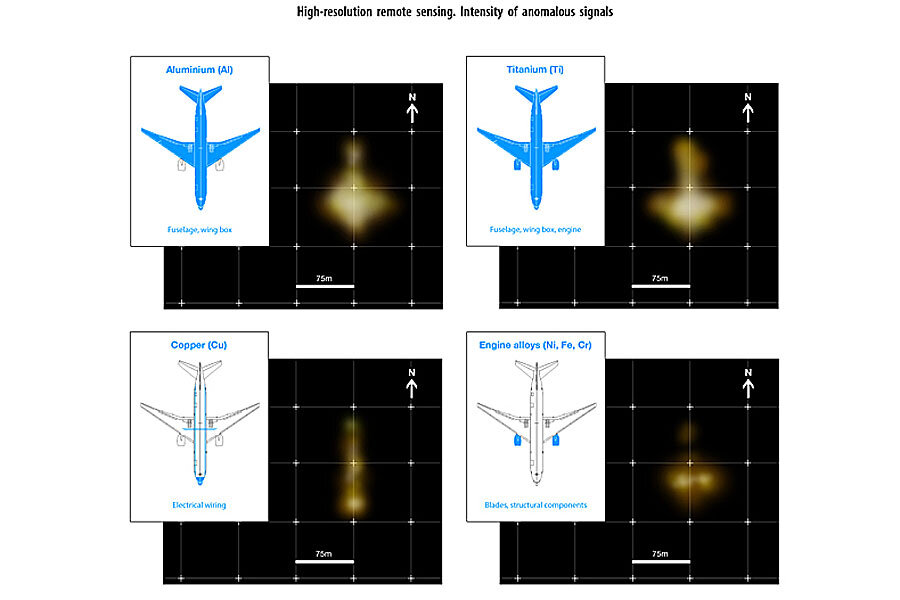Malaysia Airlines 370: Looking in all the wrong places?
Loading...
The hunt for Malaysian Airlines Flight 370 is now an underwater search. But is the official search team looking in the right location?
An Australian company, GeoResonance, says that it has found the wreckage of an aircraft on the seafloor – and that it might be Flight 370. But the catch is that this alleged aircraft wreckage is about 100 miles south of Bangladesh in the Bay of Bengal.
That's about 3,000 miles from where the current Australian-led underwater search is being conducted.
How credible is the GeoResonance data?
The company has a scanning technology that's typically used to find mineral deposits for mining. But the company says it has been used to hunt for old ships and aircraft and munitions on the ocean floor. In March, GeoResonance employed its system to hunt for the missing Malaysian Airlines flight.
"During the search for MH370, GeoResonance searched for chemical elements that make up a Boeing 777: aluminum, titanium, copper, steel alloys, jet fuel residue, and several other substances. The aim was to find a location where all those elements were present," the company said in a statement.
The company compared "multispectral images" taken from the air on March 10, two days after Flight 370 went missing, and said that it spotted "an anomaly in one place in the Bay of Bengal" where the materials found in an aircraft were detected in significant amounts, and in a pattern that matched the approximate layout of a large aircraft.
But what about the image found by Michael Hoebel?
New York recreational pilot Michael Hoebel says he may have found the wreckage of Malaysian Airlines Flight 370 in yet another location.
He's been poring over satellite images on TomNod.com (yes, this is the same site that Courtney Love used when she proclaimed that she had found the wreckage).
Mr. Hoebel says the satellite image was taken just days after the crash, and he tells WIVB-TV Channel 4 in Buffalo that it clearly shows the plane in the water, fully intact. But he wants to “let the image speak for itself,” he said.
Where is Hoebel's image? In the Gulf of Thailand, near where the last radio transmission of the aircraft was reported.
If either the Hoebel or GeoResonance images are the wreckage of Flight 370, that would mean that two key pieces of information being used in the current official search are completely wrong.
First, the projected path of Flight 370, based on satellite "pings" collected and analyzed by Inmarsat, must be way, way off. You'll recall that Inmarsat engineers believed that they had reasonably accurately reconstructed the flight path of the aircraft relative to its satellite, by using the Doppler effect.
And CBS news reports that "Inmarsat engineers compared Flight 370's direction and speed against six other Boeing 777s flying the same day in various directions. The findings were said to confirm the plane could not have gone north, and instead most likely crashed in the southern Indian Ocean."
So, the Inmarsat data says the flight didn't go north toward the Bay of Bengal, but south toward the Indian Ocean. Could Inmarsat have been tracking the wrong aircraft?
And if either Hoebel or GeoResonance are correct, then the "pings" detected by a Chinese ship (April 5) and Australian ship sonar (April 6-8) on the same frequencies emitted by underwater locator beacons, must also be incorrect. Those pings were heard along the same flight path suggested by the Inmarsat data analysis.
GeoResonance officials say their data was given to Malaysia Airlines, as well as the Chinese and Malaysian embassies in Australia on March 31, and ignored. Australian authorities were notified on April 4.
As of Tuesday, Malaysian officials say they are now looking more closely at the GeoResonance's images. But one question they might ask GeoResonance: Why not focus their scanning technology on the current official search area? And what might the price for that be?






